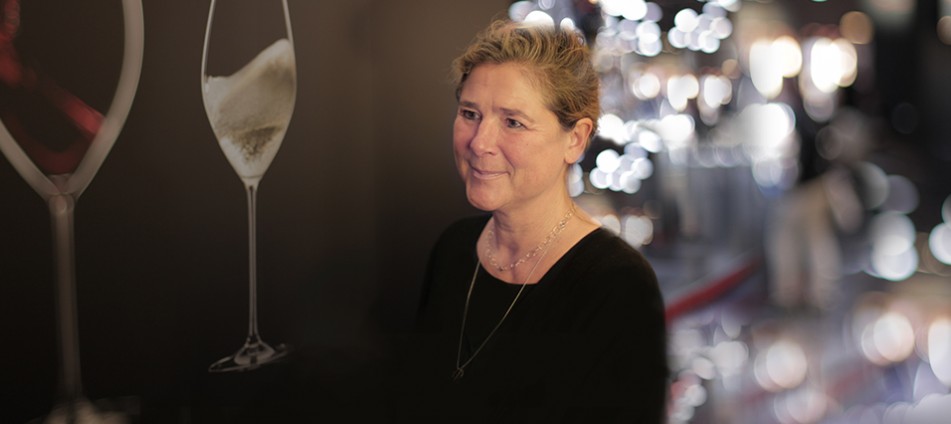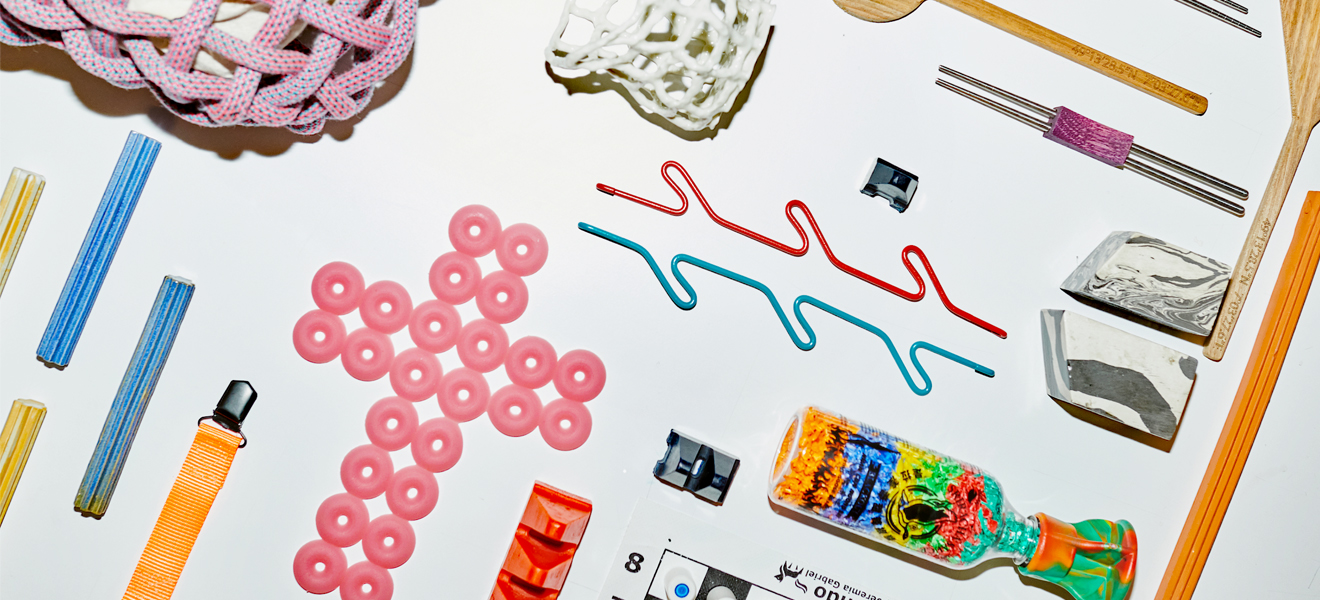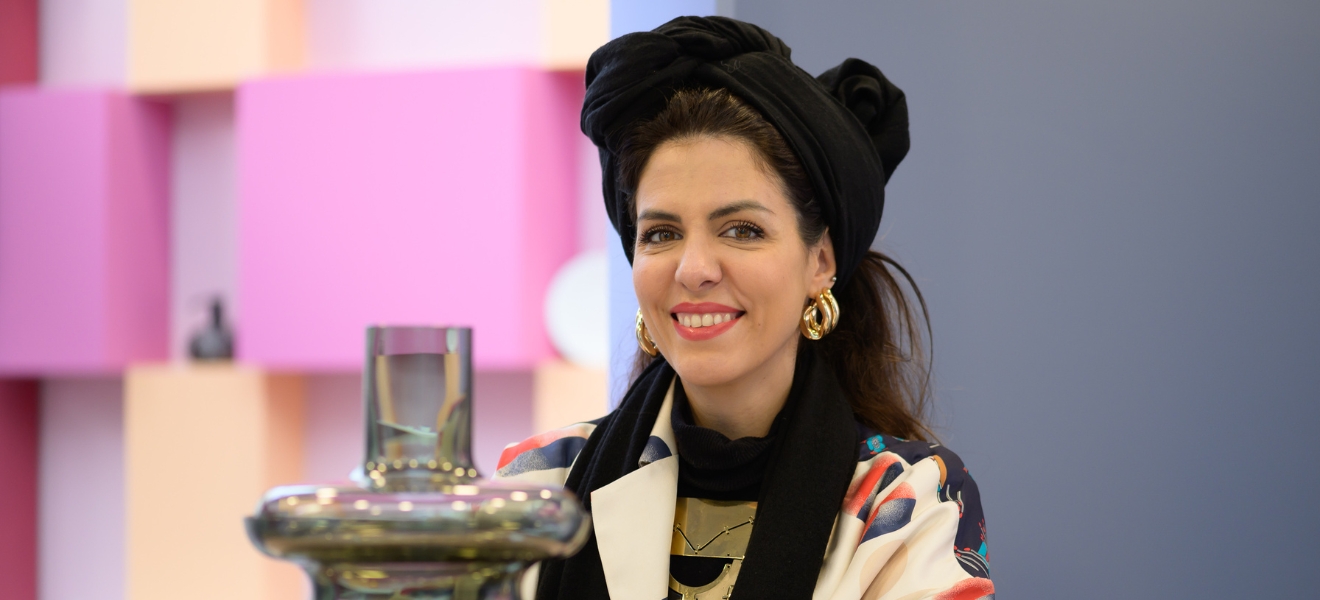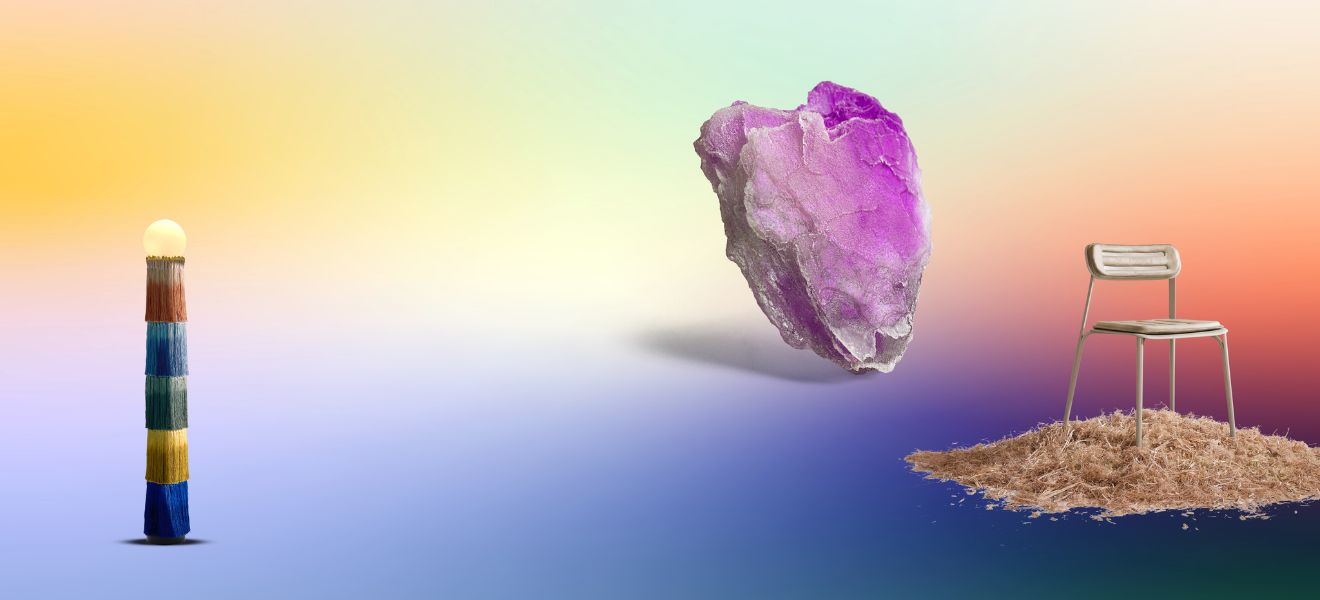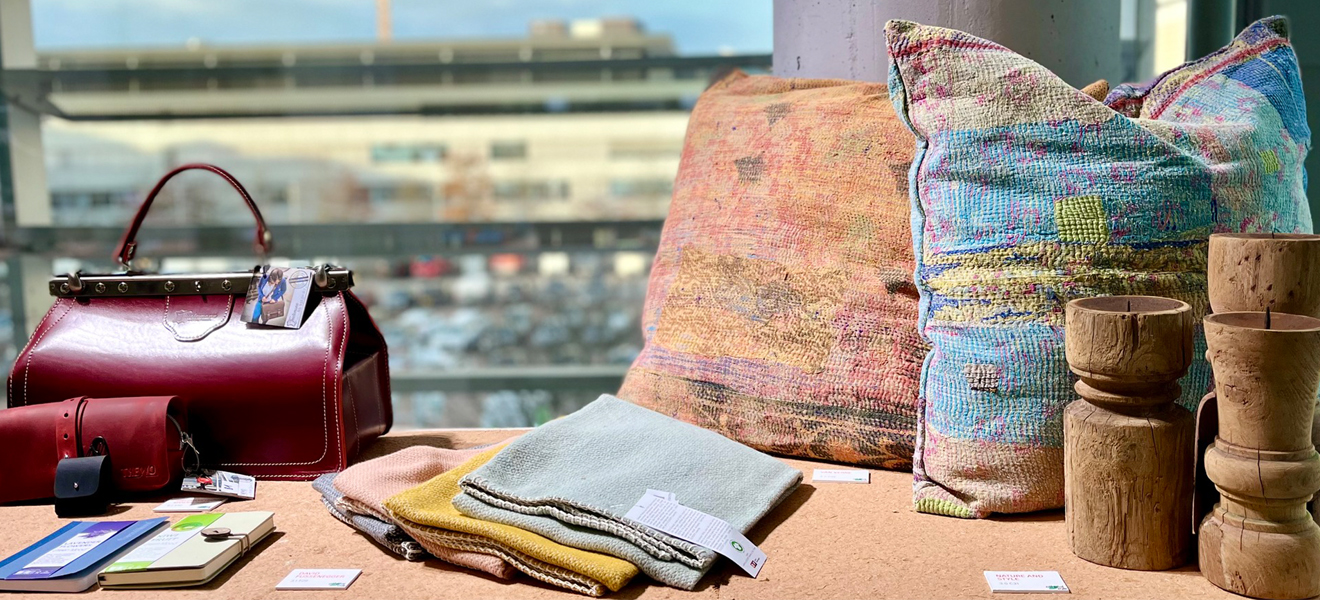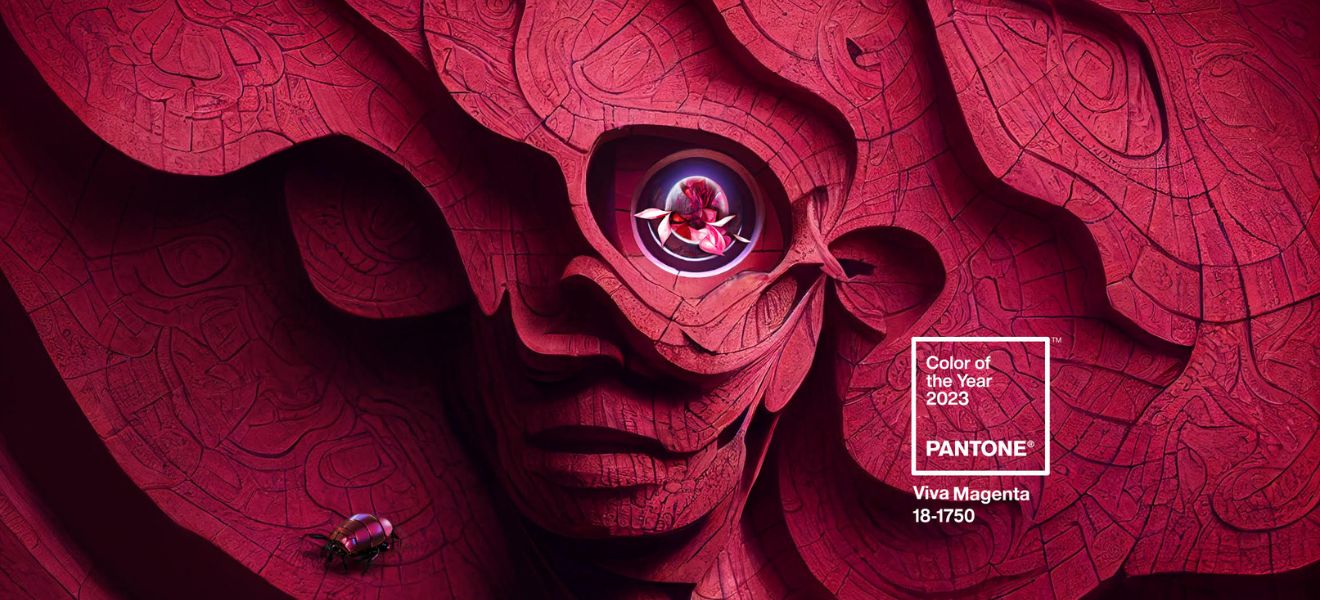Guest blog by Nina Shell (Detail Blog)
New from old. Upcycling isn’t a recent trend. Designers and creatives are always finding beautiful and useful new things to make from recycled materials. Successful examples include worn-out fire hoses transformed into handbags and dustbins turned into furniture. Blogger Nina Shell, who’s also Head of Public Affairs at Germany’s biggest design event Munich Creative Business Week, presents her most exciting upcycling finds from Ambiente 2015. These include using waste from sugar cane – for a sweeter, more sustainable shopping experience.
Being environmentally aware is no longer considered messy or unattractive. Many products are trendy and well conceived, and we are seeing lots of very attractive eco-friendly designs.
Anything described as sustainable, recycled, recovered or “upcycled” is associated with excitement not only because of the mind-boggling wealth of ideas involved, but also because new methods are constantly being developed to turn waste into valuable new materials.
A day trip to the inexhaustible wealth of inspirations at this year’s Ambiente opens up the global diversity of this sector. Visitors who aren’t strictly focused on a single product group can at first be overwhelmed by the sheer amount of stuff. Even a quick zip through Hall 11, with its many small labels – as well as large manufacturers and retailers – might be enough to overwhelm the uninitiated with the many accessories and gift items on display.
One example which stood out from the crowd is Side by Side, a company with a stated interest in sustainable design produced in workshops for disabled people. Before you start thinking patronisingly about a bunch of do-gooders, it’s worth having a closer look. The philosophy behind these products is ‘beautifully different’, and the way they’re created is also beautifully different. More than 30 designers are behind these products which are attractive to touch and see, and are all made at Caritas’ Wendelstein workshops in Raubling, Upper Bavaria by people with disabilities. No wonder many of the label’s products have won high-profile design awards! There are various new products in the range which are really cleverly designed. Oh Là Là is an attractive fruit bowl, and Bees’ Inn is a decorative bee hotel which provides a perfect place for endangered wild bees in a garden or on a balcony. On the subject of bees: they provide both the material and design idea for fascinating products from French design studio Marlene Huissoud, with its ‘From Insects’ range. These may have started life as experiments, but they have great potential to provide alternative and innovative production and design methods.

At Ambiente, the cardboard/paper area is also well served with an almost inexhaustible array of functional, practical and renewable applications of the eco-friendly approach. Here there were diverse products from manufacturers such as Cartunia from Italy with their range of cardboard furniture and lighting, as well as the makers of the Berlin Boombox, which was inspired by the good old 1980s ghetto blaster. Now, though, the feather-light sound equipment and loudspeakers are made from recycled cardboard. There’s an almost limitless wealth of product ideas – including a collection designed by international musicians.

Two other Italian manufacturers have also become devotees of paper processing, making kitchen utensils, stylish bags and other items from waxed paper. The companies Uashmama and essent’ial make sustainable and waste materials into high-end, functional and extremely attractive new products.

The Berlin company paprcuts has already made a name for itself with its innovative range of products made from (almost) unbreakable and ultra-thin Tyvek. Their collection of bags, purses, cases and wallets is continually expanding in terms of the shapes, colours, production techniques and designs.
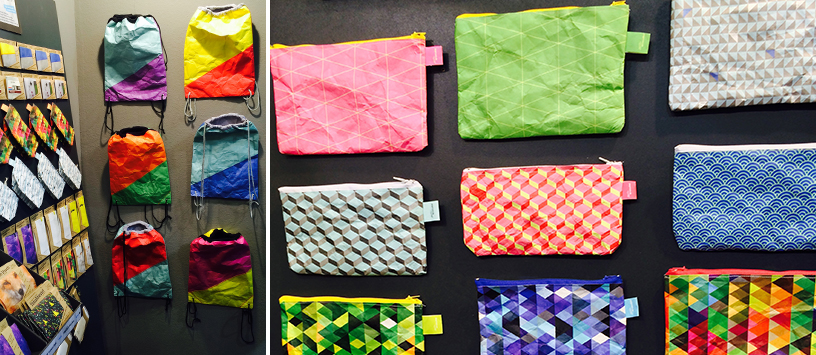
Laura Jungmann and Cornelius Réer from Karlsruhe have shown with their SameSame collection just what you can do with bottles and glass, apart from the traditional form of recycling into new glass and bottles. This is a series of re-shaped glass objects, which transform standard mass-produced items such as the legendary Günter Kupetz-designed mineral water bottle into valuable and individual pieces. Even the Swedish design classic, the Hinza shopping bag which has been a sustainability pioneer for some six decades, can be revisited. The original Hinza plastic bag, made of recyclable polyethylene in a variety of bright colours, has now been joined by two green and lilac bags made of ‘green plastic’ – a material made from sugar cane waste which can be incinerated leaving no residue.
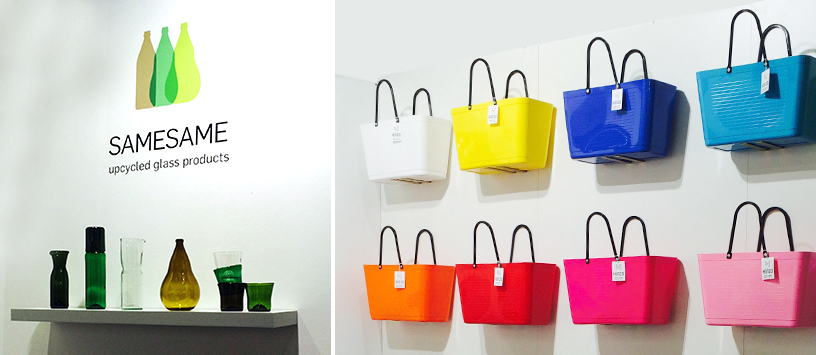
The traditional dustbin has become a symbol for waste. But that same bin can also be the basis for fun and functional small items of furniture. Czech company Design Fabrika presents seating made from old, rejected bins. This ranges from barstools to easy chairs, where the bin lid serves as a back rest. The firm also makes bars, tables, stools, wash stands and more. The possibilities for repurposing and upcycling are truly endless! Having a clear-out need not mean simply throwing out valuable items (the Swiss designers at Freitag caught the spirit of the age early on with their products made from used lorry tarpaulins). French manufacturer 727 Sailbags shows how worn-out sails can chart a new course as bags, cushions etc.

One of my personal favourites has to be Beadbags Crispy, a project which has already won awards from Unesco. Not only does it produce brilliant bags out of recycled cement sacks, it does so as part of a social project in Cambodia. As if that were not enough, a new collection of shopping and other bags made from processed fishing nets is now also available, and is proving both attractive and practical. Sustainability runs right through this product, down to the last detail. These brilliant containers have an inside made from recycled plastic bags, although you would never guess it to look at them. They can certainly hold their own against products manufactured from conventional materials!

Finally, on the last lap of this marathon tour of the fair, I had a look at an area of focus for many national and international designers and manufacturers: rubber inner tubes and hoses. Once their useful life is over in their original role, they are still much too valuable to incinerate or throw into landfill. Designer Martin Klüsener certainly thinks so. Exactly 10 years ago, he designed the first fire hose bag, and he is still on a mission to create sustainable fashion accessories. As they celebrate the company’s 10th anniversary, ideas man Martin and his brother Robert can be proud that they have contributed to socially and environmentally sustainable manufacturing – and not just to the consumer society – with their fashionable bags, belts, wallets and accessories. Happy anniversary, Feuerwear!

A bicycle inner tube is smaller in size but still has no shortage of possible uses. Berlin label Stef Fauser Design makes these into trendy and indestructible bags and accessories. In addition, inner tubes are also used to create smart small pieces of furniture, such as easy-care upholstered kitchen and bar stools.
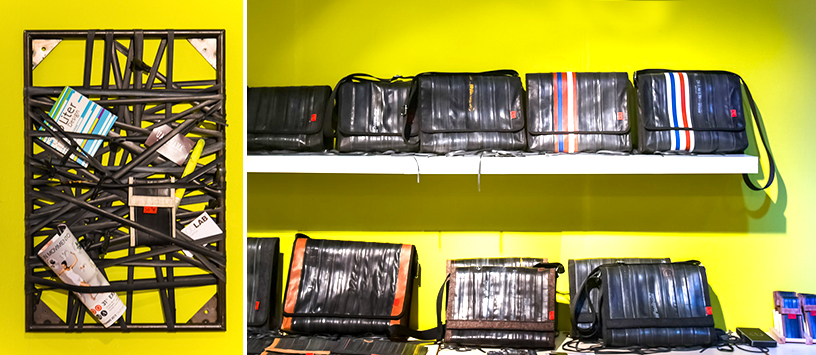
All in all, there are many products made from materials which the world wrongly thought it didn’t need and which usually end up on the rubbish dump. Yet a creative generation of designers and producers have manufactured a wonderful and inspiring array of must-have products. I’d like to see more – at Ambiente 2016, if not before. Nina Shell
